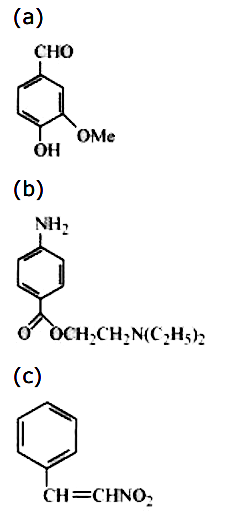Identify the atoms in each of the following compounds which do not obey the octet rule:
BeF2
To determine which atoms in the compound beryllium difluoride (BeF₂) do not obey the octet rule, we can follow these steps:
Step 1: Identify the valence electrons of each atom
- Beryllium (Be) has 2 valence electrons (it is in group 2 of the periodic table).
- Fluorine (F) has 7 valence electrons (it is in group 17 of the periodic table).
Step 2: Determine the total number of electrons involved in bonding
In BeF₂, beryllium forms bonds with two fluorine atoms. Each fluorine atom will share one of its electrons with beryllium, resulting in the following:
- Beryllium shares 1 electron with each of the 2 fluorine atoms, leading to a total of 2 shared electrons.
Step 3: Count the electrons around each atom after bonding
- After bonding, beryllium will have access to only 4 electrons (2 from the bonds with the two fluorine atoms).
- Each fluorine atom will have 8 electrons around it (7 from its own valence electrons plus 1 shared with beryllium).
Step 4: Analyze the octet rule
- According to the octet rule, atoms tend to form bonds in such a way that they have 8 electrons in their valence shell.
- In this case:
- Beryllium (Be) has only 4 electrons around it and does not fulfill the octet rule.
- Fluorine (F) has 8 electrons around it and does fulfill the octet rule.
Conclusion
The atom in beryllium difluoride (BeF₂) that does not obey the octet rule is beryllium (Be).
---
- Beryllium (Be) has 2 valence electrons (it is in group 2 of the periodic table).
- Fluorine (F) has 7 valence electrons (it is in group 17 of the periodic table).
In BeF₂, beryllium forms bonds with two fluorine atoms. Each fluorine atom will share one of its electrons with beryllium, resulting in the following:
- Beryllium shares 1 electron with each of the 2 fluorine atoms, leading to a total of 2 shared electrons.
- After bonding, beryllium will have access to only 4 electrons (2 from the bonds with the two fluorine atoms).
- Each fluorine atom will have 8 electrons around it (7 from its own valence electrons plus 1 shared with beryllium).
- According to the octet rule, atoms tend to form bonds in such a way that they have 8 electrons in their valence shell.
- In this case:
- Beryllium (Be) has only 4 electrons around it and does not fulfill the octet rule.
- Fluorine (F) has 8 electrons around it and does fulfill the octet rule.
The atom in beryllium difluoride (BeF₂) that does not obey the octet rule is beryllium (Be).
Topper's Solved these Questions
- BOOK - ICSECHAPTER - CHEMICAL BONDING AND MOLECULAR STRUCTUREEXERCISE - VERY SHORT ANSWER TYPE QUESTIONS50videos
CHEMICAL BONDING AND MOLECULAR STRUCTURE
- BOOK - ICSECHAPTER - CHEMICAL BONDING AND MOLECULAR STRUCTUREEXERCISE - SHORT ANSWER TYPE QUESTIONS76videos
CHEMICAL BONDING AND MOLECULAR STRUCTURE
- BOOK - ICSECHAPTER - CHEMICAL BONDING AND MOLECULAR STRUCTUREEXERCISE - NCERT TEXT-BOOK EXERCISES ( WITH HINTS AND SOLUTIONS)47videos
CHEMICAL BONDING AND MOLECULAR STRUCTURE
- BOOK - ICSECHAPTER - CHEMICAL THERMODYNAMICS EXERCISE - NCERT TEXT-BOOK. EXERCISES22videos
CHEMICAL THERMODYNAMICS
Similar Questions
Identify the atoms in each of the following compounds which do not obey the octet rule:
NH3View SolutionIdentify the atoms in each of the following compounds which do not obey the octet rule:
BCl3View SolutionIdentify the atoms in each of the following compounds which do not obey the octet rule:
SF6View SolutionIdentify the atoms in each of the following compounds which do not obey the octet rule:
PCl5View SolutionIdentify the atoms in each of the following compounds which do not obey octet rule:
SO2,NH3,OF2,BCl3,PCl3View SolutionIdentify the following compound
 View Solution
View SolutionIdentify the functional groups in the following compounds
 View Solution
View SolutionIdentify the functional groups in the following compounds
 View Solution
View SolutionIdentify the functional groups is the following compounds:
 View Solution
View SolutionIdentify the functional groups is the following compounds:
 View Solution
View Solution

